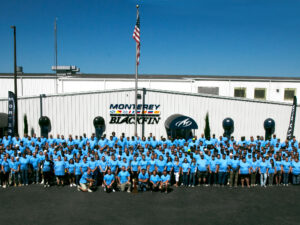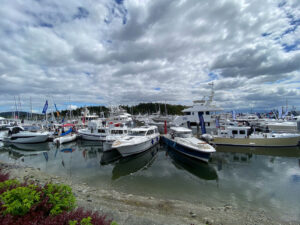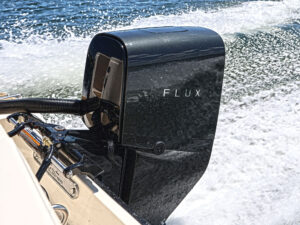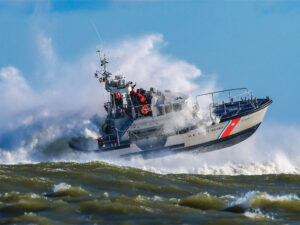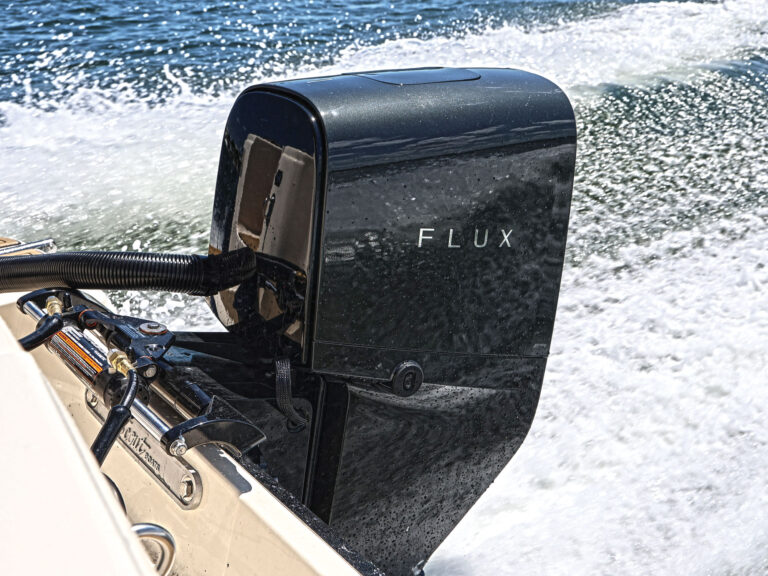If the fish aren’t biting you’ve got to figure out why, and when the wind makes docking seem impossible, you have to think fast and take control of the situation. Meeting challenges is a big part of what makes fishing and boating so exciting. Success does require the right equipment — and one piece of equipment that will help you master your fishing and boating destiny is Grady-White’s new Canyon 271.
The Canyon 271 stands apart because the manufacturer didn’t sacrifice fishing ability to make this a multi-use boat. Instead, it’s designed to go toe-to-toe with center consoles intended for hard-core oceanic angling. How will its design assist you in maintaining control, at every moment? Check out the bow area. The foredeck is flush right up to the peak, with no forward seating or raised decks to trip you or get in the way as you lean against the coaming bolsters to pump a rod. Flip up the anchor hatch, and you’ll find a windlass with forward controls complementing those at the helm. There’s also a lower access hatch, so you can get to the rode quickly and regain your rule of the situation when a loop takes the winch out of action. Your command strengthens when you swing a fish over the gunwales, thanks to the bow-deck fish box. Instead of molding in a traditional forward console seat and/or adding a space-eating coffin box, Grady-White extended the front of the console into a 389-quart half-coffin, which swings open on a pair of gas-assist struts. This makes it easier than ever to get a green fish iced and under control. The box also has dividers to keep food separated from the fish. A 198-quart transom kill box adds fish-stowing capabilities.
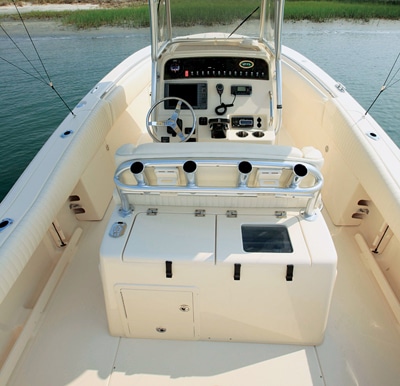
You’ll exercise your own personal divine intervention when it comes to hauling live baitfish. With a 42-gallon livewell in the leaning post and an optional 32-gallon well in the transom, you can keep everything from mullet to menhaden alive for days at a time. The wells have full-column inlets, are lighted, are fed by 1,100 gph pumps and are insulated.
One nod to creature comfort is found inside the console, which houses a head. It also has a solar-powered vent, a nice touch that adds ventilation where every boat needs it but few manufacturers see fit to provide it. Your rods and reels will be comfortable on this boat too, thanks to locking rod boxes in the inwales.
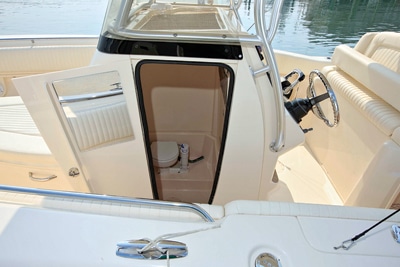
The Canyon 271 will also empower you when time is short, thanks to the pair of fire-breathing 300 hp Yamahas on the transom. Bimini starts and close-finish weigh-ins will be stress-free, with a 56 mph top end and a cruising speed solidly over 40. What happens when the seas kick up? During our test, a sharp 20- to 25-knot breeze stacked the water into vertical-face two-foot waves, and we charged into them full tilt. The 20-degree, variable-degree Ray Hunt designed hull smothered the bumps and kept us bone-dry, even when we mashed the throttles down against the helm.
What’s really surprising, however, is how much control you’ll be able to maintain when you’re handicapped by the loss of a power plant. With one engine shut off and tilted up, we discovered this boat has a get-home speed of 38.1 mph. What’s more, unlike most twin-engine rigs running on a single screw, it didn’t plow through the water before getting onto plane. And don’t worry about getting the boat into a tough slip, even if you come home on a single engine and can’t oppose the power plants. Our test boat carried a thruster in the bow, which made fighting currents in the marina a piece of cake.
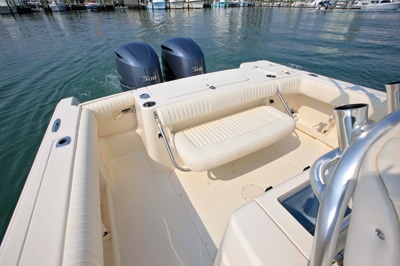
Close competitors are going to be boats like Regulator’s 26 FS ($144,995 with twin Yamaha F250 outboards) and Contender’s 28 Tournament ($133,142 powered by twin Yamaha F200 outboards). Both have a steeper deadrise at the transom (24 degrees on the Regulator and 24.5 on the Contender), which usually makes for a smoother ride with a bit less stability, but neither delivers that half-coffin in the bow nor the startling single-engine performance. All three of these boats can boast of unusually stout construction, though the Grady-White does have a few touches that go far beyond the norm. The stainless-steel hardware, for example, is passivated in an acid bath to remove casting impurities, then buffed, then passivated and buffed again. Hatches are resin transfer molded (RTM), which results in the optimal resin-to-fiberglass ratio and a flawless finish on both sides. And stringers are laminated into the hull while it’s still in the mold, so both parts maintain their integrity until they cure into a single piece. Solid? You betcha. And when you consider the construction, features and performance of the Canyon 271 as a whole, one thing is for sure: With this boat underfoot, your fate lies in your own hands.
Comparable models: Regulator 26 FS, Contender 28 Tournament
**_View the accomodation plan for the Grady-White Canyon 271._
**
**
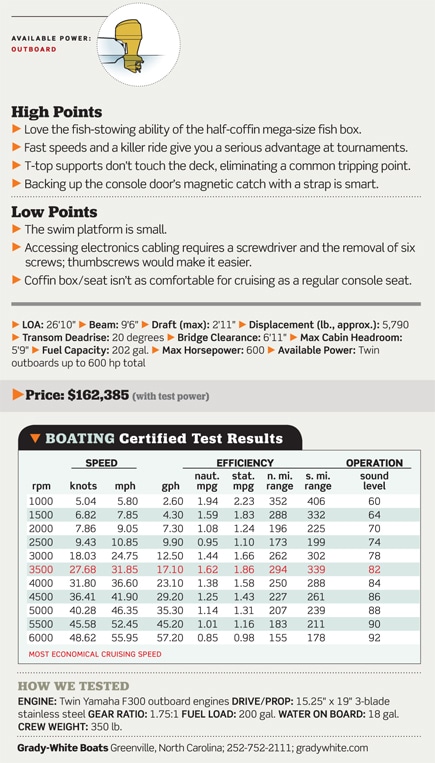
**
Grady-White Boats – Greenville, North Carolina; 252-752-2111; gradywhite.com

